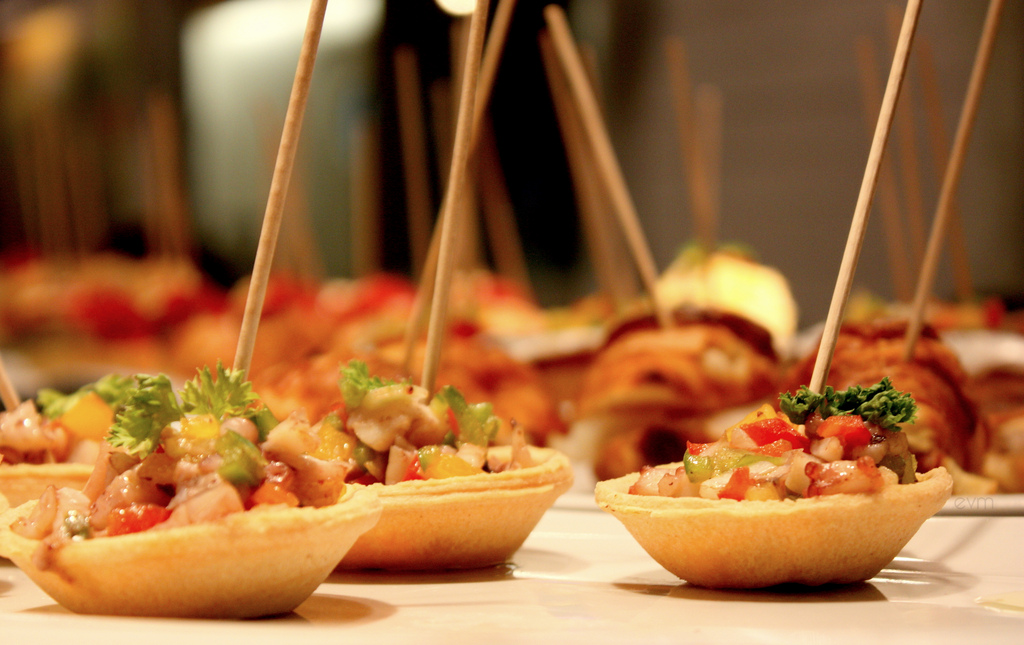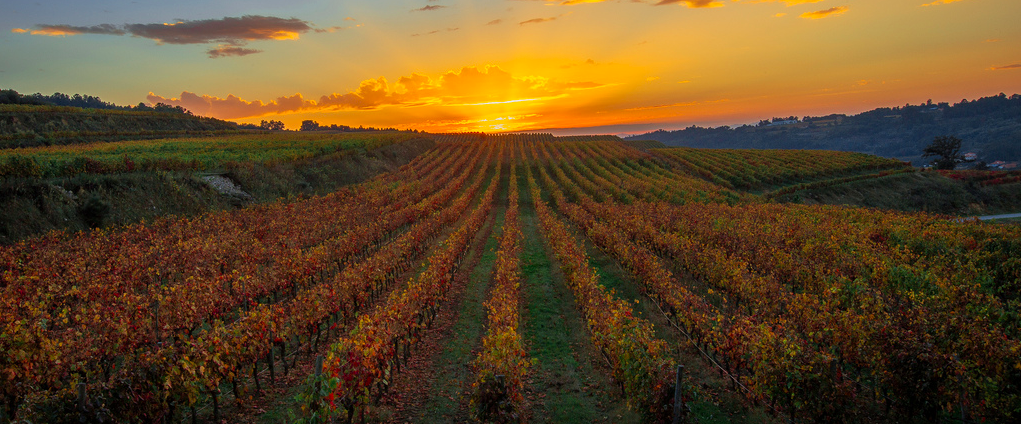A Glutton’s Guide to Spanish Culture

I love Spain, but I love the view of the country that I have in my head from childhood and – democracy and human rights apart – that is how I still want it to be.
Whenever I am there, I seek out the traditional and the old fashioned, because I like it. Not for me the trendy tapas of foaming asparagus concoctions in test tubes. In fact if I am honest, I do not want Spanish food to be creative in anyway – I want the old dishes of my youth; Huevos a la Flamenca, Riñones al Jerez or Chicken Chilindron.
As a consequence the trendy new restaurants of Spain leave me cold. I do not want gleaming mirrored surfaces and trendy chairs, I want beams, painted tiles, barrels, heavy straight-backed chairs and hams hanging from the ceiling. I know what you’re thinking, touristy stereotypes. In part yes, but they are only stereotypes because that is how things really used to be.
Savoring Spanish Food
Spanish food does not traditionally change much and so Spaniards do not normally look at menus, they just order, which is what I like to do when in Spain. I can reel off my favourite things anywhere and be pretty certain of getting them.
Personally I avoid this new fangled habit of eating tapas for a meal, partly because it is not traditional and partly because it is always either more expensive or much worse value than a full meal or plato combinado in a proper restaurant. For single travelers, I get the appeal, but the Menu of the Day is considerably more appealing.
Not traditional, tapas? Well no, tapas is really a tiny snack to accompany a pre-dinner drink. It is not to replace dinner, it is as well as dinner. The new concept of sharing dishes of things to make a meal has come to Spain via the UK and US and spread tapas well beyond its traditional Andalucian home.
Tapa means cover it was originally a piece of bread to stop flies falling in your drink, interesting things were then put on the bread to attract your custom – and more flies I expect. The Basques have a similar tradition of snacks, but they are little nibbles held together by skewers and are called Pinxos.
When I was a boy tapas only existed in Andalucia and the big cities and even then only in a few places. I know this because my father is a tapas addict and in the late 1960s and early 1970s we drove for hours in pursuit of tasty morsels.
No, I like proper Spanish restaurants, where the Spanish eat – inside, in the cool, with dark nooks and crannies, loaded with atmosphere and history. I like where I eat in Spain to be a sort of living cultural museum and it is a desire that is surprisingly easy to fulfill.
El Botín, Madrid
 Sobrino de Botín in Madrid, is officially the oldest restaurant in the world having been founded in 1725 by Frenchman Jean Botín and his Spanish wife. It is a terrific experience to go there, you can feel a sense of history as you enter and it is a wonderful glorification of gluttony and Spanish cuisine – do not go if you are not hungry and go for lunch to give yourself time to recover. Whilst you are enjoying your meal and the sights and the sounds, just remember that Goya worked there as a waiter and that it was a favourite haunt of Ernest Hemmingway who loved it so much he mentioned it in his writing.
Sobrino de Botín in Madrid, is officially the oldest restaurant in the world having been founded in 1725 by Frenchman Jean Botín and his Spanish wife. It is a terrific experience to go there, you can feel a sense of history as you enter and it is a wonderful glorification of gluttony and Spanish cuisine – do not go if you are not hungry and go for lunch to give yourself time to recover. Whilst you are enjoying your meal and the sights and the sounds, just remember that Goya worked there as a waiter and that it was a favourite haunt of Ernest Hemmingway who loved it so much he mentioned it in his writing.
‘We lunched upstairs at Botín´s. It is one of the best restaurants in the world. We had roast young suckling pig and drank Rioja Alta. Brett did not eat much. She never ate much. I ate a very big meal and drank three bottles of Rioja Alta.’ Fiesta – The Sun Also Rises, Ernest Hemingway.
Botín specialises in roast meat cooked in their ancient built in, tiled ovens. Their two real specialities are cochinillo asado (roast suckling pig) and cordero asado (roast baby lamb). Both are very rarely available in London, so are an absolute treat unless you live in Spain, Botín cook them to perfection and they have a depth of flavour that is astonishing and shows how wonderful such simple food can be.
Straightforward Catalan dishes like these are the perfect match with almost any Spanish red wine – certainly much better than fussy modern creative food in my opinion. If you want to immerse yourself in Spanish cuisine, you could do no worse than to have a starter of the Sopa de Ajo con huevo (a chicken broth laced with garlic and sherry with an egg broken into it), or if you really are hungry the revueltos de la casa – this translates as scrambled eggs of the house and is cooked with morcilla (black pudding) and potatoes, but is much tastier and more wonderful than it sounds.
It goes without saying that there is there is also a fabulous array of Jamón available with which you could start your meal as well as some superb fish dishes for mains, but meat really is the tradition here.
There is also an excellent wine list that covers pretty much all of Spain, not just sticking to Rioja. They even have some of the excellent local Vinos de Madrid including my favourites Tagonius Crianza and Tejoneras Alta Selección both of which are superb with roast meats, as was the Protos Crianza from Ribera del Duero.
A meal in the Botín certainly makes you full, but as well as the food you cannot avoid the feeling that you have enjoyed a genuine cultural experience.
 Los Caracoles, Barcelona
Los Caracoles, Barcelona
I have long wanted to go to a similar place in Barcelona – Los Caracoles. Much younger then El Botín this was founded in 1835 and was originally called Can Bofarull after the Bofarull family that created it and continue to run it to this day. Currently the fourth generation is in charge and wisely appear to change very little. Except for the name which at some point in the nineteenth century was changed to Los Caracoles, ‘the snails’ to honour the dish that had made them famous.
As you arrive you see the spit roast chickens, another speciality, that are cooked out the front and apparently this used to be a prized spot for prostitutes as they could keep warm there in winter.
From the outside you have no sense that this is a big restaurant as you enter through the bar, which is rather splendid and a great place to enjoy a drink while waiting for your table. The wonderful smell of the burnt caramel on the Crema Catalanas being prepared behind you might well drive you mad with desire, but a Cava or two will sort you out.
When your table is ready you exit via the back of the bar and go through the hot and busy kitchen. However it very quickly opens up into an Aladin’s Cave of delights, room after room of tiled walls, barrels of wine in racks, signed photographs of celebrity diners, many old and local, some newer and international. Like at the Botín narrow staircases lead off in all directions and every now and again you pass a lovely little alcove laid out as a private dining room. It is for all the world like falling back through time.
I was with a small group of sommeliers and I rather think most of them had wanted to go somewhere more swanky and chef-like. However, they all really cheered up and seemed to love it as the wonderful aromas and jovial, busy atmosphere of the place got to them.
Being a Catalan restaurant there is much more of a Mediterranean feel here with paellas on the menu as well as cochinillo asado and Cabrito asado – roast shoulder of kid – which was a lovely lean, gamey and rich meat. My companions raved about the snails in their rich red wine sauce while I greatly enjoyed the gambas a la plancha and the pollo a l’ast – spit roast chicken – which was astonishingly good for something so humble.
 Again the wine list is quite something and covers most of Spain’s regions. We enjoyed a lovely bottle of Recaredo Brut Nature Cava as our aperitif, while we enjoyed a 2006 Brunus Montsant with the meats. This wine comes from an excellent region that virtually surrounds the much more famous Priorat, enjoys the same climate and much of it has the same licorella soils, but it usually costs a fraction of the price of Priorat – go figure.
Again the wine list is quite something and covers most of Spain’s regions. We enjoyed a lovely bottle of Recaredo Brut Nature Cava as our aperitif, while we enjoyed a 2006 Brunus Montsant with the meats. This wine comes from an excellent region that virtually surrounds the much more famous Priorat, enjoys the same climate and much of it has the same licorella soils, but it usually costs a fraction of the price of Priorat – go figure.
We also tried a white that I had been wanting to taste for ages – a Picapol from the northern Catalan region of Pla de Bages and the mere idea of it excited me as of course it is the same grape as France’s Piquepoul or Picpoul. This example was 2010 Abadal Picapol from Bodegas Abadall and I was impressed. It was softer and more fruity than in France with some of the character of a rich Albariño – I think it could really catch on.
All was going well until disaster struck with the dessert. We had been tormented for hours by the smell of the burning caramel on the crema catalanas, but when we tried to order they were all gone. However all was rescued by the turrón ice cream. Now this is one my favourite Spanish things, turrón is the honey and almond nougat-like sweet that is traditionally made in Jijona in Alicante. When it is used as a flavouring for ice cream it can be a wonderful hedonistic treat and I always try one when in Spain. So, I was expecting one thing, but received another; really good nata or cream ice cream with crumbled turrón all over it. The sweetness of the turrón was perfectly balanced by the ice cream and it all went superbly with a café cortado.
Food Tours
Los Caracoles, like el Botín is a wonderful, homely restaurant that is a very comfortable place to be. In both the food is excellent and solidly traditional and you leave feeling that you have enjoyed a glimpse of the past and feasted on culture.
For more information on Spanish food and wine, check out our Ultimate Gastronomy Guide to Spain, or better yet, a roaming food tour throughout Spain, don’t hesitate to contact us! We’d love to satiate your tastebuds with spectacular Spanish cuisine!






